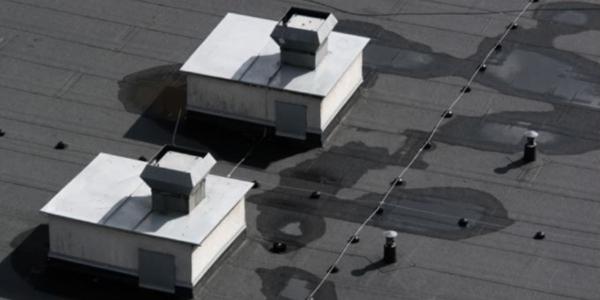Tips for Composite Roofing Installations in Cold Weather

Two pairs of socks, check. Thermal underwear, check. Warm hat and gloves, check. Composite roofing tiles, double check!
Tim Gentry, Vice President of Technical Services, DaVinci Roofscapes
Despite frigid weather, roofers across the country can install synthetic roofing tiles with confidence, even in the bone-chilling cold. By using extra jobsite caution, along with top-quality underlayments, an imitation slate or faux cedar synthetic roofing system can be installed 12 months a year.
Actually, DaVinci Roofscapes composite roofing can be installed in much colder temperatures than many other roofing products – even in temperatures as cold as 20 degrees F. As opposed to asphalt shingles that are more sensitive to temperatures and can expand and contract, composite roofing materials are ready for cold weather application.
Despite shorter days and cold temperatures, designer roofs made of synthetic materials can be installed during the winter months when using the right preparations and procedures. Here are some tips for your cold weather installations:
- Tip #1 - Prior to installation in colder temperatures, make sure that synthetic shake shingles and composite slate tiles have been stored flat, in as warm a space as possible.
- Tip #2 - DaVinci's unique formula allows our synthetic roofing material to remain flexible in colder weather. It's important that the roofing shingles are laid at a very minimum 3/16”.
- Tip #3 - If using a pneumatic roofing nail gun for plastic roofing materials installation, the pressure should not be set too high. You may wish to hand nail pieces if you're having trouble with your air compressor.
- Tip #4 - When cutting imitation slate tiles or shake alternative shingles in colder temperatures, score the lightweight roofing tiles with a straight blade and break the tile along the score or use a saw blade with smaller and finer teeth.
- Tip #5 - Dress for the weather. Make sure you and your installation team use fall protection devices and appropriate footwear, since winter makes the roof more slippery and icy. And, invest in some "snap and heat" hand warmers to slip inside your gloves.
Here's one extra tip: Don't forget the snow guards. If you're installing in a cold weather region, make sure to recommend and install suitable snow guards that will help reduce the chance of "avalanches" of melting snow from polymer roofs.
Snow and ice falling off a roof is more dangerous than most people realize. Unfortunate people who happen to be standing underneath a snowfall when it happens can be seriously injured. Snow guards help keep that from happening by preventing snow from falling down in big, heavy blocks and allowing it to melt and be drained off in smaller amounts.
For more information, visit www.davinciroofscapes.com.























Comments
Leave a Reply
Have an account? Login to leave a comment!
Sign In